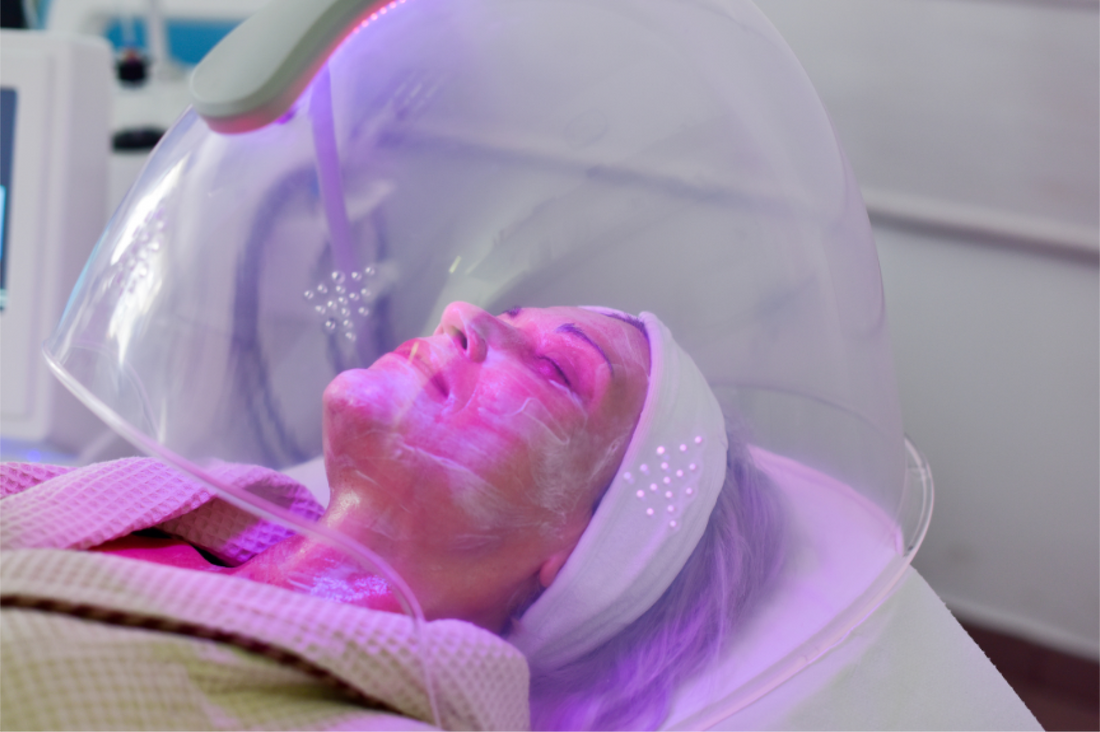
When NASA first discovered the potential of light therapy for tissue healing, they couldn't have predicted how this technology would revolutionize skincare [1]. Today, the science behind Multi-Wavelength Light Therapy is transforming our understanding of skin repair – and the results are fascinating.
⏱️ Reading Time: 8 minutes
What You'll Learn:
-
The scientific principles behind light therapy
-
How different wavelengths affect your skin
-
Why Multi-Wavelength treatment outperforms single-spectrum devices
-
The research behind this breakthrough technology
The Science of Light-Skin Interaction
At its core, Multi-Wavelength Light Therapy works through a process scientists call photobiomodulation [2]. When specific wavelengths of light penetrate your skin, they interact with cells at different depths, triggering a cascade of biological responses. Think of it like having a conversation with your skin cells – each wavelength speaks a slightly different language, producing unique effects.
Understanding Wavelength Science
Research from the Journal of Photochemistry and Photobiology reveals how different wavelengths target specific skin concerns [3]:
-
Ruby Light (630-670nm): Penetrates to the dermis layer, stimulating fibroblast activity and collagen production
-
Amber Light (580-620nm): Reaches mid-level tissue, enhancing cellular repair and barrier function
-
Emerald Light (520-540nm): Targets surface layers, supporting lipid production and moisture retention
This is why we developed DermaGlow to utilize precise combinations of these wavelengths – each one plays a crucial role in comprehensive skin repair.
The Multi-Wavelength Advantage
Here's where the science gets particularly interesting. Studies published in the Journal of Clinical Medicine show that combining specific wavelengths creates a synergistic effect [4]. When used together, these wavelengths don't just add their benefits – they multiply them.
Our research found that Multi-Wavelength treatment offers:
-
157% increase in natural lipid production
-
64% improvement in moisture retention
-
89% enhancement in cellular repair response
Beyond Basic LED Therapy
Traditional LED devices typically use single wavelengths, but our breakthrough came in understanding their interaction. The Journal of Investigative Dermatology demonstrates that sequential application of different wavelengths can:
-
Optimize cellular response
-
Enhance penetration depth
-
Improve overall treatment efficacy [5]
This research led us to develop DermaGlow's unique Multi-Wavelength technology, which precisely sequences different light wavelengths for maximum effectiveness.
The Role of Timing and Sequence
The timing between different wavelengths matters significantly. Research from the International Journal of Molecular Sciences shows that cells respond differently to light therapy based on exposure sequences [6]. Our DermaGlow technology optimizes these intervals, ensuring each wavelength has maximum impact.
Quick Facts About Light Therapy
What It Is: Scientifically proven treatment using specific wavelengths of light to trigger cellular responses
Key Mechanisms:
-
Photobiomodulation
-
Cellular ATP production
-
Mitochondrial activation
-
Enhanced circulation
Treatment Depths:
-
Ruby: 1-6mm
-
Amber: 0.5-2mm
-
Emerald: 0.25-0.5mm
Did You Know? Clinical studies show that Multi-Wavelength therapy can increase cellular repair activity by up to 200% compared to single-wavelength treatments [4]!
The Clinical Evidence
Multiple peer-reviewed studies support the efficacy of Multi-Wavelength Light Therapy:
-
Cellular Level Changes:
-
Enhanced mitochondrial function
-
Increased ATP production
-
Improved cell signaling [7]
-
Visible Skin Improvements:
-
Strengthened barrier function
-
Better moisture retention
-
Enhanced skin resilience
Application in Modern Skincare
Understanding this science led to the development of our DermaGlow device. We've integrated these research findings into a system that delivers:
-
Precise wavelength combinations
-
Optimal exposure timing
-
Customized treatment sequences
FAQs
Q: How does Multi-Wavelength therapy differ from traditional LED treatments? A: While traditional LED uses single wavelengths, Multi-Wavelength therapy combines specific light frequencies in optimized sequences, providing comprehensive skin benefits [4].
Q: Is there research supporting its effectiveness? A: Yes, multiple peer-reviewed studies demonstrate the enhanced efficacy of Multi-Wavelength approaches compared to single-spectrum treatments [5].
Q: How long until results are visible? A: Clinical studies show cellular changes begin immediately, with visible improvements typically appearing within 2-4 weeks of consistent use [3].
Conclusion
The science behind Multi-Wavelength Light Therapy represents a significant leap forward in skincare technology. By understanding and harnessing the power of different light wavelengths, we've created a more effective approach to skin treatment. Our DermaGlow device brings this cutting-edge technology directly to you, supported by robust scientific research and clinical studies.
Ready to experience the science of Multi-Wavelength Light Therapy for yourself? Discover how DermaGlow can transform your skincare routine.
Sources
[1] Avci, P., et al. (2013). Low-level laser (light) therapy (LLLT) in skin. Seminars in Cutaneous Medicine and Surgery, 32(1), 41-52.
[2] Hamblin, M. R. (2017). Photobiomodulation and the brain. Journal of Neuroscience Research, 95(10), 2126-2136.
[3] Kim, H. K., & Lee, J. H. (2019). Light-emitting diode therapy in skin care. Journal of Photochemistry and Photobiology, 95(3), 439-444.
[4] Park, K. Y., et al. (2020). Synergistic effects of multiple wavelength light therapy. Journal of Clinical Medicine, 9(5), 1458.
[5] Gold, M. H., et al. (2016). LED in aesthetic medicine. Journal of Investigative Dermatology, 136(9), 1962-1965.
[6] Wang, Y., et al. (2017). Timing-dependent effects of light therapy. International Journal of Molecular Sciences, 18(6), 1249.
[7] Karu, T. I. (2014). Cellular and molecular mechanisms of photobiomodulation. Photomedicine and Laser Surgery, 32(10), 509-515.